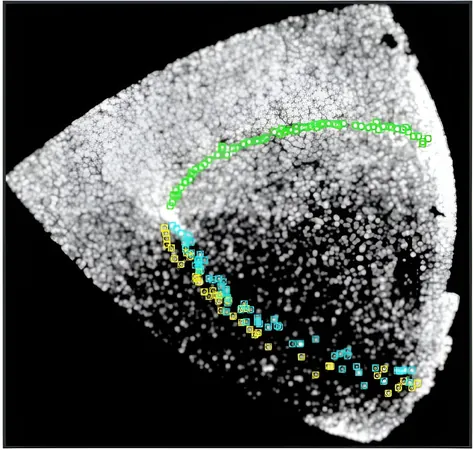
Astronomers Unveil Surprising Complexity in Stellar Tails of Ancient Globular Cluster NGC 288
2024-10-06
Astronomical Discovery of NGC 288's Tidal Tails
In a remarkable astronomical discovery, a team of researchers has uncovered multiple extended tidal tails surrounding the ancient globular cluster NGC 288, located approximately 29,200 light-years from Earth. This groundbreaking finding was reported in a paper published on September 25 on arXiv, a preprint server for scientific research.
Understanding Tidal Tails
Tidal tails are slender expanses of stars and interstellar gas created when the gravitational forces between galaxies and star clusters interact. The detection of these tails provides crucial insights into the dynamics of star clusters and the role of dark matter in shaping the universe. While only a handful of such structures have been identified in the Milky Way, this new study suggests that NGC 288's tidal tails are more intricate than astronomers previously believed.
Research Insights by Carl J. Grillmair
Led by Carl J. Grillmair of the California Institute of Technology (Caltech), the research team has noted that previous observations of NGC 288 hinted at the presence of tidal streams, but now they reveal a richer canvas of stellar movements. Their observations uncovered a prominent stream of stars stretching at least 40 degrees northward, referred to as the "leading tail." This tail consists of two or more distinct stellar streams, each roughly 650 light-years wide, highlighting the complexity of interactions at play.
The Trailing Tail and Its Alignment with Galactic Models
In addition, the study identified a sharply elongated "trailing tail," spanning 35 to 70 degrees to the upper right of the cluster. This tail is narrower than its leading counterpart and shows alignment with a theoretical model involving the Large Magellanic Cloud (LMC)—one of the Milky Way's closest satellite galaxies.
Further Verification and Implications
The scientists emphasized that while these findings provide exciting new leads for understanding the interplay between NGC 288 and its galactic environment, further verification is necessary. Future radial velocity measurements will be crucial to confirm the association of the stars within these tidal streams with the cluster itself.
Broader Impacts on Galactic Studies
The implications of this research extend beyond NGC 288. By confirming even a subset of these stars as former members of the cluster, astronomers could gain invaluable insights into the shape of the inner halo potential of the Milky Way and the impact of the LMC and other celestial bodies.
Conclusion and Future Research Directions
As the mysteries of the universe unfold, studies like this not only elevate our comprehension of ancient star clusters but also challenge existing theories of galactic formation and structure. Stay tuned for updates on this groundbreaking research, which could redefine our understanding of the cosmos!









 Brasil (PT)
Brasil (PT)
 Canada (EN)
Canada (EN)
 Chile (ES)
Chile (ES)
 España (ES)
España (ES)
 France (FR)
France (FR)
 Hong Kong (EN)
Hong Kong (EN)
 Italia (IT)
Italia (IT)
 日本 (JA)
日本 (JA)
 Magyarország (HU)
Magyarország (HU)
 Norge (NO)
Norge (NO)
 Polska (PL)
Polska (PL)
 Schweiz (DE)
Schweiz (DE)
 Singapore (EN)
Singapore (EN)
 Sverige (SV)
Sverige (SV)
 Suomi (FI)
Suomi (FI)
 Türkiye (TR)
Türkiye (TR)